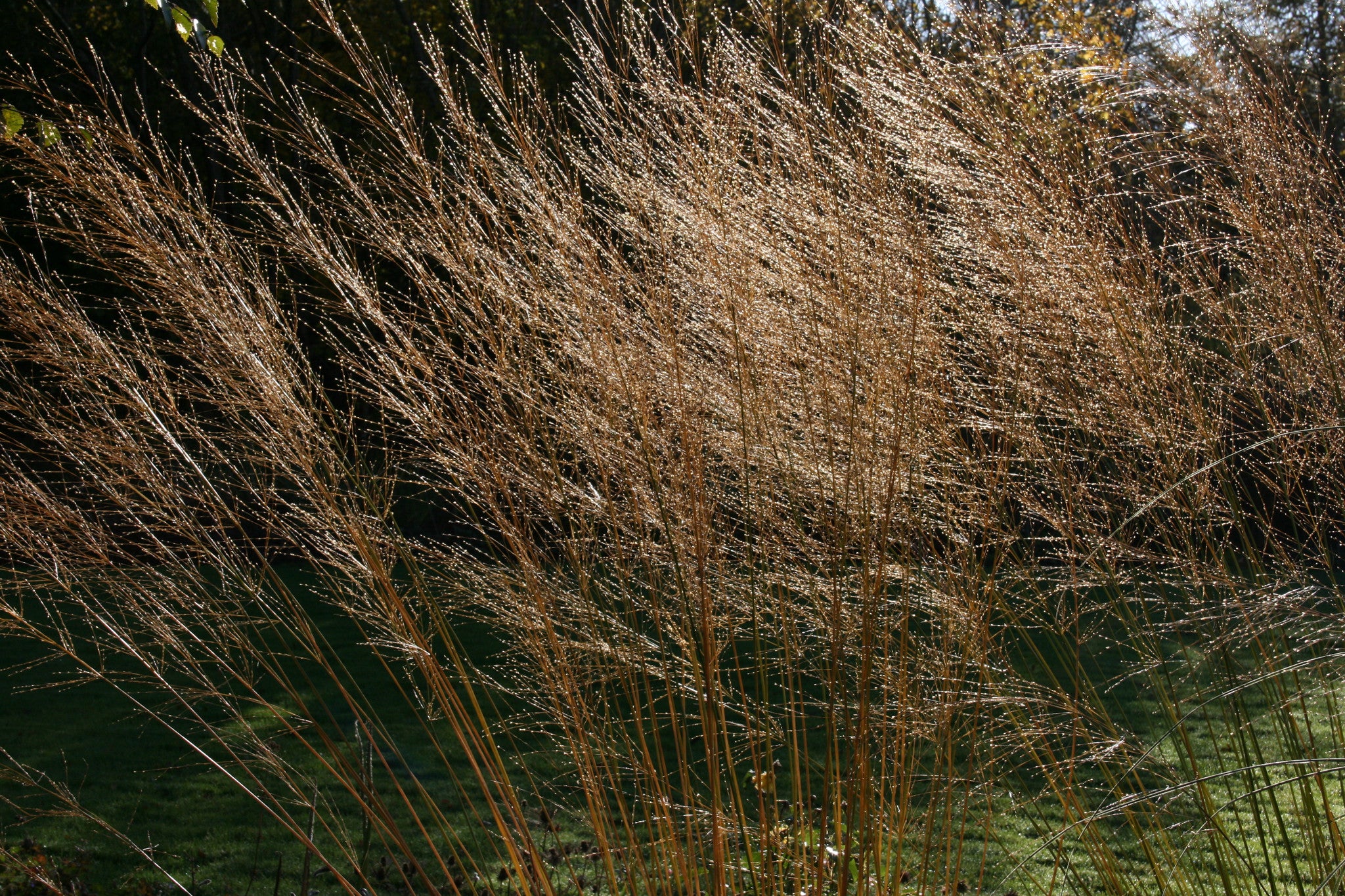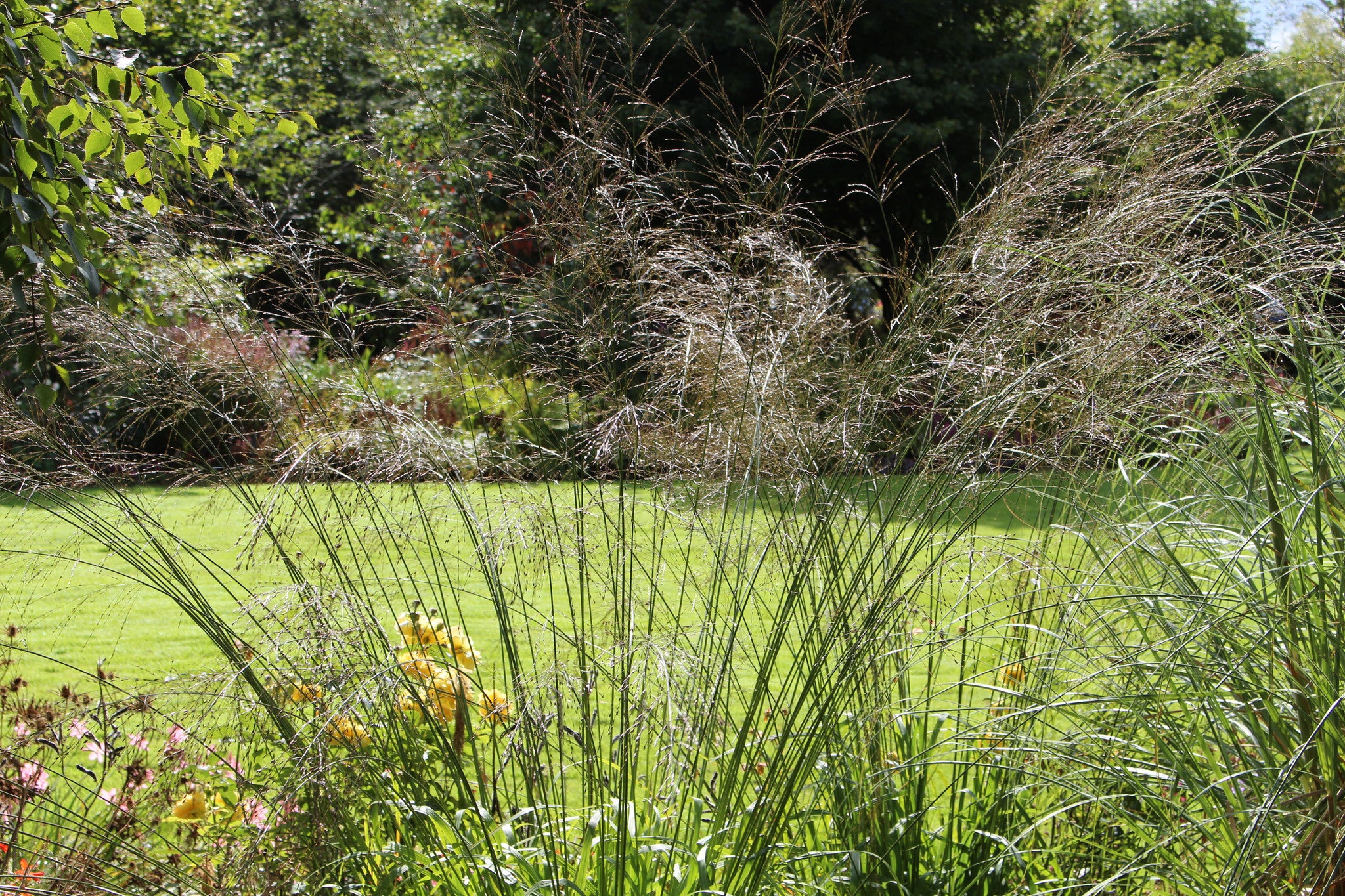Molinia caerulea subsp. arundinacea 'Transparent'
Approx. 0.5 litre pot
About this cultivar:
Molinia caerulea subsp. arundinacea 'Transparent' is the favourite Molinia of Val Bourne. The flowers of this deciduous grass have an open habit, so stand, airy and almost transparent, high above the foliage. It’s therefore ideal for the middle of a border planted among large-flowered perennials, where the purple, feathery spikelets will catch every breeze.
- Position: Full sun, partial shade
- Soil: Almost any soil, grows well in Ballyrobert
- Flowers: July, August, September, October, November
- Other features: -
- Hardiness: Fully hardy, grows well in Ballyrobert
- Habit: Clump forming, Tufted
- Foliage: Deciduous
- Height: 150 - 210 cm (5 - 7 ft)
- Spread: 90 - 120 cm (2 - 3 ft)
- Time to full growth: 2 to 5 years
- Plant type: Herbaceous Perennial, Grass like
- Colour: Green, yellow, white
- Goes well with: Achillea, Helenium, Aster, Aconitum, Solidago, Eupatorius, Persicaria, Vernoncia, and Astilbe
About this genus:
Molinia (mol-ee-ne-a), commonly known as moor grass, is a genus of two species of flowering plants in the grass family (Poaceae), native to damp moorland in Europe and north and south west Asia. They are both herbaceous perennial grasses. The genus is named after Juan Ignacio Molina, a 19th-century Chilean naturalist. The two species are Molinia caerulea (purple moor grass) and Molinia japonica (Japanese moor grass). The specific epithet caerulea means deep blue and refers to the purple spikelets. Do I have to tell you what the specific epithet japonica means!?!?
Molinia is native to low-lying marshlands and riverbanks. Consequently, it requires moist, cool summer conditions for optimal performance; not a problem on these islands. Like most grasses it will tolerate a bit of drought. In other words, this genus will grow almost anywhere.
Molinia’s sturdy stems hold delicate, straw-coloured panicles all season above dense, arching tufts of deep green foliage. Plant Molinia where the light in your garden is best - I think it is perhaps the most beautiful grass to watch sunlight glisten through in the summer, autumn and winter. I am not alone- Innovative landscape architect Wolfgang Oehme, who has included more than a million ornamental grasses in his designs since 1975, considers Molinias to be some of the very best performers of them all. Certainly the most kinetically exciting grass, Pair it with other grasses for dramatic effect. To heighten the drama, give them plenty of room and a dark background. If that sounds too much drama try pairing with late flowers such as Achillea, Helenium, Aster, Aconitum, Solidago, Eupatorius, Persicaria, Vernonia ,and Astilbe.




